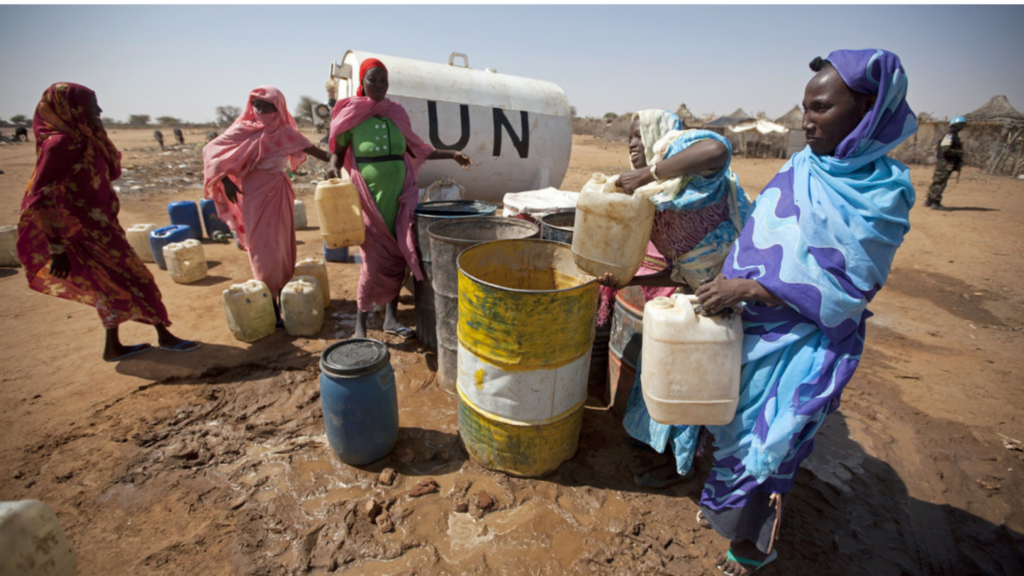Border Control in South Asia: The Risks of The New Bangladesh-Pakistan Alliance.
Introduction
Since the deposition in August last year of former PM Sheikh Hasina, diplomatic and military relations between Bangladesh and Pakistan have thawed (Ethirajan, 2025; Kumar, 2025). These nascent ties between the formerly-united countries makes for an uneasy India to their south, threatened by what they perceive as a common front against the two nations ‘common enemy’ (Hasnain, 2025). The hysteria around it would seem to suggest that things were far better when Bangladesh operated as a nearby ally to India under Hasina, yet border issues have plagued relations between the two countries for decades. The Indian Border Security Forces (BSF) have, for many years, operated under a shoot-to-kill policy (Adams, 2011), and though the number of deaths peaked between 2000 and 2009 – up to 1000 in that period (BDNews24, 2010) – the numbers have remained alarmingly high, and began to rise again post-2019 (Kawser, 2020). This raises questions around how close the two nations really were. Echoing this sentiment, Bangladeshi writers posited the question: why were there so few border deaths on the Pakistan border – nominally an enemy – compared to that of the ‘friendly’ Bangladesh (The Daily Star, 2025)? Will strengthened ties between Bangladesh and Pakistan really affect this, or do heightened tensions seem to steady BSF aggressiveness, as in Pakistan’s case? As we will see, the discussions of violence on Pakistani borders generally tend to be misleading, and may lead some to the wrong conclusions.
Violence on the Bangladesh border
As is shown in the numbers above, violence committed by the BSF has increased since the turn of the decade, with the numbers of deaths and abductions growing in time. In the first two months of this year the amount of injuries is already more than half that of the previous year, with abductions and deaths on track to overtake 2024’s figure too. This is in spite of a nominally pro-Indian regime in Dhaka. The takeover of Interim Cabinet Chief Mohammed Yunus in August has led to some realignment in South Asia, as not only did talks of closer ties with Pakistan emerge, but also a reorientation toward China (Datta, 2025). Perhaps the new regime reckons that China would be a more generous and stable benefactor, a state also less likely to concern themselves with the internal politics of Bangladesh. However, the implications of these geopolitical manoeuvres could be grave: India already houses up to 50,000 illegal migrants from Bangladesh every year (Kumar, 2025), with the border boundaries obscured until the last decade by several Bangladeshi and Indian enclaves. (The Hindu, 2021). In addition populations on either side choose to live very close to the border due to the fertility of the land (Mayilvaganan, 2019). The demarcation of the boundaries is further complicated by natural factors, such as flooding and land erosion (Mayilvaganan, 2019). With hostility growing in tandem with disputed borders, the risk of exponential growth in violence is substantial.
Violence in Jammu and Kashmir
Bangladeshi writers and public figures do point to the example of Pakistan to their West as a case where heated relations seem not to equate to border violence. Certainly, the number of deaths perpetrated directly by the BSF is not as high as on its border with Bangladesh. However, the issue of border disputation does leave the door open for tensions to rise and extremist groups to proliferate from opposing land claims. The Jammu and Kashmir region specifically presents the dangers of disputed boundaries and contested claims. Terrorism as much as state violence threatens the lives of citizens in the region.
The categorisation of this graph does somewhat differ: with the separation of civilian, security and insurgent deaths. This makes some of the data hard to compare, as due to the ‘shoot-on-sight’ policy of the BSF in Bangladesh there is no real marker for assessing who is a civilian and who is a potential ‘insurgent’ or ‘extremist’. However, total deaths in the Jammu- & Kashmir region quite significantly outweigh those of the Bangladeshi border. One could compare only civilian deaths of the former, in which case the two areas are not as far apart, but that would be diminishing what is ultimately a greater level of overall violence in the Jammu & Kashmir region. In this way, the narratives swirling in Bangladesh are somewhat of a misnomer: danger amongst India-Pakistani contested regions is higher than that of the Bangladesh border. Both Kashmir and Jammu are in themselves independent case studies. In the former, in 1947 there remained the option (in theory, though not realistically in practice) of independence from either of the partitioned states (Rashid, 2020). This tradition has continued, with both Muslim and Hindu militants actively and regularly seeking either secession to either state, or nominal independence (Cloughley, 1999). Often, religious identity ended up overtaking any national identity (Gigoo, 2011). In Jammu, though the violence has taken on different forms, it is very much still present (Gangahar, 2013). In either region, violence has not been state-monopolised, and insurgent groups and members have multiplied. These are the risks of losing border demarcation.
Conclusion
What truly are the risks of closer Pakistan-Bangladesh ties then? The analysis of Bangladeshi writers often points to the relatively low fatalities on the direct India-Pakistan border as a sign of tension creating hesitance: this could be how it plays out. But what the numbers above delineate is the potential for violence only increasing, if irredentist attitudes are promoted, or if border disputes are put into question, as they might well be with a more distant relationship between Bangladesh and India. Particularly, comments recently around a ‘Greater Bangladesh’ from a government adviser in Dhaka (The North-Eastern Chronicle, 2024) were criticised by the Indian Ministry of External Affairs (Mehta, 2025). Though an Islamic identification with Pakistan could be of use to both parties in reducing hostilities (Mannan, 2018), both nations need to be careful around the implications of a BNP-led India that may feel threatened. The Bangladeshi adviser in this case, perhaps would best be ignored.
Bibliography
Adams, B., ‘India’s shoot-to-kill policy on the Bangladesh border’, The Guardian, 23 January 2011
Ain o Salish Kendra, ‘Border Violence by BSF’, available at https://www.askbd.org/ask/?s=Border+Violence+by+BSF [accessed 08/04/2025]
BDNews24, ‘BSF kills 1000 Bangladeshis in 10yrs’, 13 December 2010, available at https://bdnews24.com/bangladesh/bsf-kills-1000-bangladeshis-in-10yrs [accessed 08/04/25]
Cloughley, B. (1999), ‘Violence in Kashmir’, Security Dialogue, 30 (2), 225-238
Datta, S., ‘Opinion | Both Bangladesh And India Must Face Some Hard Facts Now’, New Delhi TV, 8 April 2025
Ethirajan, A., ‘India watches warily as Bangladesh-Pakistan ties thaw’, BBC News, 17 March 2025
Gangahar, M. (2013), ‘Decoding Violence in Kashmir’, Economic and Political Weekly, 48 (4), 35-42
Gigoo, S., The Garden of Solitude (New Delhi, 2011)
Hasnain, S. A., ‘Opinion | Can Bangladesh-Pakistan Warming Be A Threat To South Asia?’, NDTV, 3 February 2025
Kawser, R., ‘Bangladesh sees highest border deaths in 10 years’, Dhaka Times, 22 December 2020
Kumar, B., ‘Pakistan, Bangladesh armies meet, say outsiders can’t harm ‘brotherly’ ties’, Business Standard, 15 January 2025
Kumar, T., ‘India, Bangladesh, and Illegal Migration: Finding a Balanced Recipe for Security and Humanitarian Responsibilities’, The Dialogue Box, 20 January 2025
Mannan, M. A. (2018), ‘Islam’s role in Bangladesh–Pakistan Alignment against India under the BNP’s Rule’, India Quarterly: A Journal of International Affairs, 74 (2), 138-159
Mayilvaganan, M. (2019), ‘Illegal Migration and Strategic Challenges: A Case Study of Undocumented Migration from Bangladesh to India’, Artha-Journal of Social Sciences, 18 (4), 25-42
Mehta, H., ‘Opinion | Time To Question Yunus’s Walk And Talk In 2025’, News 18, 3 January 2025
Rashid, I. (2020), ‘Theatrics of a ‘Violent State’ or ‘State of Violence’:Mapping Histories and Memories of Partition in Jammu and Kashmir’, South Asia: Journal of South Asian Studies, 43 (2), 215-231
The Daily Star, ‘Impunity for border killings must end’, The Daily Star, 8 January 2025
The Hindu, ‘India, Bangladesh swap border enclaves, settle old dispute’, The Hindu, 17 November 2021
TNEC News Desk, ‘Bangladesh Adviser’s Provocative Comments on Victory Day Spark Controversy’, The North-Eastern Chronicle, 18 December 2024



